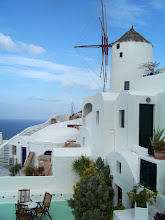
Last night’s PSU vs OSU was a close game between two football teams with strong traditions. As a Penn Stater living in the Buckeye nation, I found the following fact even more interesting: PSU’s quarterback is from Ohio; OSU’s quarterback is from Pennsylvania. I’m not gonna comment on the game here, just want to point out the big contrast in their jersey styles which reflects the fundamental differences in their football cultures.
The blue-and-white Penn State jersey is probably the plainest among all college teams. More distinctive is the "no-name" feature: only the player’s number is shown on the jersey. This classic and modest look is well in tune with Joe Pa’s coaching style: teamwork rather than individualism is more heavily emphasized. Ohio State jersey, on the opposite, is much fancier especially with the eye-catching buckeye-leaf stickers on each player’s helmet. The stickers have been a long time tradition at OSU to reward superior performance. They serve as a key incentive among football players. It reminds me of the “red flower system” I experienced in my grade school in China, which was manifested in the film Little Red Flowers. Today many colleges are the adopters of helmet sticker system, but it’s certainly not for Joe Pa - "I've never been for that stuff, that's why we've never had names on uniforms because nobody achieves anything without the others.”
It’s hard to say which approach works better, since both PSU and OSU have had excellent performance over the years, and different approach makes each team a unique one. Maybe they should learn more from each other to balance teamwork with individualism.
The blue-and-white Penn State jersey is probably the plainest among all college teams. More distinctive is the "no-name" feature: only the player’s number is shown on the jersey. This classic and modest look is well in tune with Joe Pa’s coaching style: teamwork rather than individualism is more heavily emphasized. Ohio State jersey, on the opposite, is much fancier especially with the eye-catching buckeye-leaf stickers on each player’s helmet. The stickers have been a long time tradition at OSU to reward superior performance. They serve as a key incentive among football players. It reminds me of the “red flower system” I experienced in my grade school in China, which was manifested in the film Little Red Flowers. Today many colleges are the adopters of helmet sticker system, but it’s certainly not for Joe Pa - "I've never been for that stuff, that's why we've never had names on uniforms because nobody achieves anything without the others.”
It’s hard to say which approach works better, since both PSU and OSU have had excellent performance over the years, and different approach makes each team a unique one. Maybe they should learn more from each other to balance teamwork with individualism.




